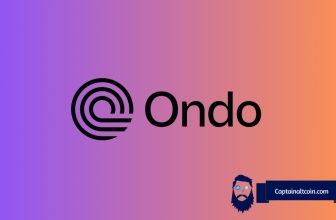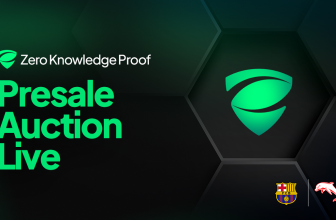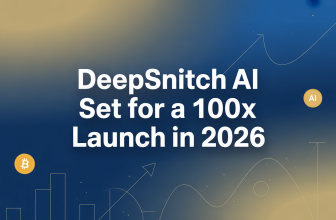
- EOS Black crashes 80% in 4 hours, claims of exit scam pop up
EOS Black, a blockchain-based venture capital fund built on top of the EOS blockchain, has been caught in some strong controversy lately.
Just a few days ago, the currency managed to drop more than 80% in just under 4 hours, moments after experiencing a strong price breakout. A Twitter user @rektkid_ first shone a light on the event and offered a deeper insight into what exactly caused this drop.
Calling EOS Black a project with a “$400m market cap with absolutely nothing to show”, this Twitter user pointed out another interesting thing. Apparently several people went into EOSPrice telegram and started spreading rumors how a pump and dump group is going to explode the price from $0.25 to $0.5. This tricked “gullible speculators” who started taking positions in BLACK tokens expecting this rise. The price was pumped up just above $0.41 before the dumping took place, likely screwing over those who expected the pump to last even longer. The drop which ensued was pretty brutal, smashing through the previous $0.25 levels and bottoming out at $0.6.
While you are here, have a look at our EOS price prediction for 2020.
The user later on reported that this drop might have been caused by EOS Black early investors exit scamming from the project. Tracking down the sell transactions that caused the drop, rektkid found that a large quantity of dumped tokens ended up being sold on a Korean exchange called Cashierest. His final contribution was to reveal the addresses that sold the most BLACK tokens during this drop.
For their part, EOS Black came out with a rather flimsy explanation. Their full response was as follows:
“Hi. The eosBLACK team.
The reason for the recent price decline was attributed to the release of a large amount of money in a short period of time due to incitement by malicious rumors (Chirashi) distributed to the initial investors.
There was never any developer dumping inside the company, and once again, the transaction in the eosblackteam account that comes up with capture is the amount paid to the initial investor I mentioned earlier.
If there is an investor who wants to explain directly from the person in charge of the company, this is also possible, so please visit after the appointment.
I am saddened by the investment loss caused by a sudden drop in prices. In our eosblackteam, we promise to do our best to develop according to the road map that we have released to the investors since then and will try to recover the token price.”
And while the controversy stays looming above the project, the price doesn’t seems to care that much as EOS Black recovered 23% of its USD value on the daily at the moment of writing.
- Tether reopens account verification and direct redemption of fiat from its platform
In an announcement titled as noted above, Tether launched its redesigned customer verification/direct redemption of Tether to fiat features.
The old redemption model which operated directly through Tether’s native platform has been halted previously, due to the platform’s inability to handle what they call an “unexpected rush” of new cryptocurrency traders during the previous year.
This model has been replaced with a new, “flexed” one, which will look to “harness the established infrastructure and security of Bitfinex,” a platform which was built with these increased volumes in mind. Those wishing to redeem their Tether to fiat could do so 1:1 via the Bitfinex link, with whom Tether has a long-lasting business to business relationship. Bitfinex’s capability to handle this process has been criticized in the past by some community members who weren’t able to exchange their USDT to USD.
However, after securing a partnership with Deltec bank, Tether has regained the required capacities to handle the verification/redeeming process themselves. Investors can now utilize the on-platform wallet for creating and redeeming, without having to rely on a third party.
The process has been redesigned to favor the professional investor audience, as all accounts will have new minimal issuance and redemption requirements equal to 100,000 USD and $100,000 USDT, respectively. Customers will apparently be limited to one USD fiat redemption per week.
- 24 ICO’s that raised $2.8 billion currently have almost no trading volume
A guest author on Cointelligence recently published a piece analyzing some of the most valuable ICO’s on the market and their overall appeal among traders. The conclusions he came to as a result of this analysis weren’t that encouraging.
Noting that many of these tokens have “significant” economic problems, the author, whose name is Andrew Tar, adds that the biggest one might be the lack of liquidity around them.
“Liquidity is a significant parameter for any financial asset and shows how fast the asset can be converted to cash. In other words, it represents how fast you can buy or sell some product,” explains the author. He suggests that some tokens have less than 1% of their total supply in circulation, with most token holders choosing to HODL rather than spend.
“… large transactions are disastrous for such markets. If someone wants to buy or sell a significant amount of tokens, the deal can shake the market. Under those circumstances, the person can actually become a monopolist, and the person is able to change the price. The owner of a large amount of tokens can manage the market and influence the project,” he further added. A weakness such as this one isn’t something you want to see on a healthy financial market.
He analyzed more than 20 projects that managed to collect over $50 million from their investors by launching an ICO. TaTaTu, Dragon, Hdac, Paragon, Bankera, Qash, Envion, PressOne, WAC, TenX, Dropil and others are on this list, with all of them suffering from the symptoms noted above. Check out the complete article here if you want to delve deeper into the full list of issues and problems that ICOs suffer from due to low trading activity.
- NASDAQ to launch Bitcoin futures in 2019 despite the recent market downturn
Bloomberg reported today that Nasdaq Inc. will push through with its plan to list Bitcoin futures by the end of the first quarter of 2019, even with current market conditions being the way they are.
The second biggest stock exchange in the world is currently working on complying with the demands of the U.S.’s main swaps regulator, the Commodity Futures Trading Commission, before launching the mentioned futures. This isn’t the only entity looking to gain the CFTC favor at the moment, as a New York-based investment management firm VanEck is going through the compliance review process as well.
The futures will be competing against already present CME and Cboe contracts, which have been traded ever since December last year.
Nasdaq futures will be based off Bitcoin’s price on numerous spot exchanges, pooled together by VanEck Associates Corp., said Bloomberg’s source.
- ICONLOOP launches “ICON Development Network” on Amazon Web Services marketplace
ICONLOOP, a blockchain-specialized tech company from Seoul focused on being the “technical” part of the ICON project, revealed that its latest product, “ICON Development Network”, is now available on the Amazon Web Services marketplace.
The company has been a part of the AWS Partner Network since early 2018; with ICON Development Network, they are now able to provide a software solution that allows developers to run a private instance of the ICON blockchain through AWS.
“ICON Development Network platform will provide an easy-to-use development-ready environment. This enables developers to bootstrap their own private ICON Network, adapted to their own convenience and need, in order to build, test or validate their project running on top of the ICON Protocol,” explains the project’s official Medium announcement.
The solution is meant to “improve understanding, accessibility, and convenience” when building on the ICON Network and potential developers can check it out on the project’s official GitHub page.









There is a huge misinfo campaign going on, sponsored by Consensys (no I did not make this up, read the study “EOS is not a blockchain” to get the details of this misinfo campaign)
* Misinfo: There is no actual use for EOS itself.
* Truth: EOS is a utility token. In the same sense that you need ETH to send transactions, you need to stake EOS to send your tokens around.
* Misinfo: Crypto will always be wasting vast amounts of energy
* Truth: EOS is 66,454 times more energy efficient than Bitcoin and EOS is 17,236 times more energy efficient than Ethereum (under PoW-model)
https://eosauthority.com/green/
* Misinfo: EOS is a centralized shitchain with only 21 people validating transactions.
* Truth: EOS is one of the most decentralized and fastest blockchains in existence. There are more than 400 active BPs participating in a fluid democracy. Many of the original BPs that launched the mainnet are no longer in the TOP20. On top of that, the number of BPs can be increased at any time at the cost of latency which will give EOS an upper hand in the decentralization race as the team makes progress on scaling EOS.
Also, that are not 21 people but 21 companies and communities comprised of many individuals.
* Misinfo: EOS is not a blockchain and does not even use Merkle trees.
* Truth: EOS uses Merkle trees just like any other blockchain. EOS does have a merkle tree over all the transactions within a block. This means it is possible to prove you have been paid without having to process all blocks nor trust the full nodes. These proofs are smaller than ETH because light nodes don’t even require the full history of block headers. That is a design choice that makes EOS so fast! Superior technology all the way. Dont let the misinfo campaign get to you.
* Misinfo: No one is using EOS dapps.
* Truth: EOS dApps currently handle millions of transactions per day—far more than Ethereum. In fact, EOS is the most successful blockchain launch in the history of blockchains.
10x on tx count
* Misinfo: Governments will have an easy time taking down EOS
* Truth: ETH relies upon a peer-to-peer discovery process. Governments and ISPs around the world know exactly where every Ethereum node is and can trivially shutdown any and all public endpoints. Not the case with EOS
* Misinfo: Larimer is working on a new project not involing EOS
* Truth: Larimer is ONLY working on EOS and has recently stumbled upon an idea to build much faster and scalable token Source: https://www.reddit.com/r/eos/comments/a19lxn/dan_larimers_statement_on_his_new_token_idea/
* Misinfo: No companies are building on EOS.
* Truth: Some of the leading YCombinator startups are not building on ETH but EOS. Below you will see the reasoning WHY
* Misinfo: EOS is not enterprise-ready
* Truth: While ETH has a nice alliance, namely the EEA, those are mostly highly-customized forks of Ethereum, but the key is that Ethereum is not built for consortium chains nor has interchain capabilities yet. EOS is by design a consortium chain (based on superior DPoS which is a better model for enterprises) and is built in a way to adapt to real-life enterprise needs. Block.one as a first-mover recognized the importance of interchain capabilities so that value can flow between enterprise forks and the public chain. Case in point: Consensys trying to change corporate culture instead of focusing on what matters, enterprise adoption and interchains (consequently they dropped the ball). Further examples: https://www.prnewswire.com/news-releases/blockchain-startup-eos-pro-announces-enterprise-grade-eosio-distributed-network-300688941.html
* Misinfo: EOS is not really feeless and is a shady economic model that will never work.
* Truth: While there are costs involved in sending EOS around they happen during the setup process of your account. After that transactions are free. The EOS locked in your account may undergo some fluctuations but you dont need to buy that much nor do you need to buy a token every time you want to perform an action on a blockchain. That is a vastly superior model that will reduce friction.
* Misinfo: EOS will be governed by the rich and is the only system that is set up in this way.
* Truth: In practice, pareto principles dictate that 80% of the supply will be controlled by 20% of stakeholders. That seems to be already the case with ETH and should over time become worse. The same will be true for EOS. All PoS or DPoS systems are vulnerable to this governance monopoly. A solution has yet to be found and in my mind will not be found (causes: human psychology and genes) unless people opt for a 1-identity-1-vote-approach (which obviously only works in systems with onchain-governance like EOS.
* Misinfo: EOS dapps are 100% gambling dapps.
* Truth: While EOS has some gambling dapps (a display of innovation and first movers) some of the most used dapps in existence are actually games such as “EOS Knights” or decentralized exchanges such as “Newdex”.. also some of the highest funded VC-vetted dapp teams are working on a decentralized Wikipedia alternative and a spiritual successor to “Second Life” (decentralized VR world)
* Misinfo: EOS wasnt functional at the time of the ICO and raised an enormous amount of money illegitimately for nothing but a whitepaper and a testnet.
* Truth: ETH wasnt functional at the time of the ICO and raised an enormous amount of money for the awareness at the time for nothing but a whitepaper and a testnet and still wasnt classified as a security